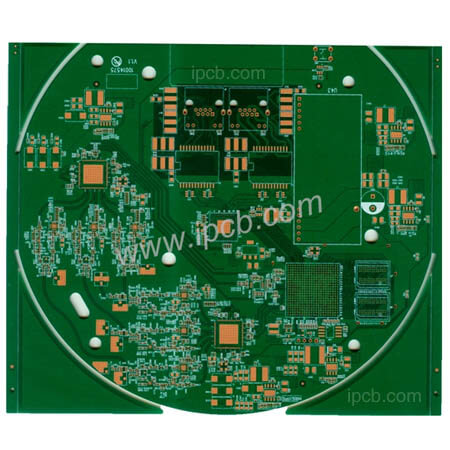Automated Test Equipment (ATE) plays a crucial role in the modern electronics manufacturing industry, particularly in the realm of PCB production. As technology continues to advance at an unprecedented pace, the need for precise, efficient, and comprehensive ATE testing in PCBA has become more critical than ever. The ATE system consists of four core components that work together to achieve high-precision testing of electronic devices:
-Test Head: The primary interface for connecting and testing electronic devices
-Handler/Prober: Manages the physical movement and positioning of devices during testing
-Precision Measurement Instruments: Advanced tools for capturing detailed electrical characteristics
-Computer Control Systems: Sophisticated software that manages testing protocols and data analysis

ate in pcba testing
In PCBA testing, there are the following differences between ATE testing and manual testing:
-ATE testing relies on equipment and software, and is programmed; manual testing is manually operated and more flexible.
-ATE testing is high-speed and efficient, and can run continuously; manual testing is slow, easy to fatigue and low efficiency.
-ATE testing has high accuracy and good consistency; manual testing is easily affected by human factors and has poor consistency.
-ATE testing equipment has high investment but low operating cost; manual testing equipment has low cost but high labor cost.
-ATE testing is suitable for large-scale production and complex circuit boards; manual testing is suitable for small-batch production and fault diagnosis.
Challenges of ATE testing
-Miniaturization and Complex Designs
As electronic devices become faster and more complex, the need for ATE in PCBA testing that can test at high speeds and frequencies is growing. To meet the needs of modern electronic products, ATE systems are constantly being improved to enhance signal quality and timing accuracy. We use advanced testing technologies like vector signal analysis and jitter measurement to make sure that high-speed interfaces and components are tested accurately and reliably. In today's fast-paced market, it's essential to test electronic devices at high speeds and frequencies to ensure their quality and performance.
-Emerging technologies demand
ATE systems are being developed to test emerging technologies such as 5G, the Internet of Things (IoT), and autonomous vehicles. These technologies require specialized ATE test solutions to ensure their performance is stable and trustworthy. For example, ATE systems for 5G testing need to support high-frequency signals and complex modulation schemes. ATE systems for IoT devices must be able to test different sensors and communication interfaces. ATE systems developed for new technologies are driving new ideas in the market. This helps manufacturers keep up with the changing needs of the electronics industry.
Future trends in ATE testing
-Artificial Intelligence and Machine Learning
AI and machine learning are being added to ATE in PCBA testing to make it more efficient and accurate. AI algorithms can analyze test data as it happens, identify patterns, and improve testing processes. Machine learning models can also predict potential failures and recommend ways to prevent them, reducing the risk of product defects. Additionally, AI-enabled ATE systems can self-optimize test parameters and adapt to changing test conditions, improving overall testing performance. The use of AI and machine learning in ATE testing is expected to lead to major improvements in ATE technology, making testing processes more reliable and faster.
-Industry 4.0 and Smart Manufacturing:
Industry 4.0 principles, including the Internet of Things (IoT) and Artificial Intelligence (AI), are changing the ATE in PCBA testing. Smart manufacturing ideas are being used in ATE systems. This allows for real-time monitoring, data analysis, and predictive maintenance. This helps manufacturers improve how they test products, make their processes more efficient, and reduce times when the machines are not being used. ATE testing are becoming more connected and intelligent, providing valuable insights into production processes and product quality. As the industry adopts Industry 4.0, the need for smart ATE solutions is expected to increase, leading to new developments in the market.
Conclusion
ATE test equipment represents a critical component of modern PCB manufacturing. As technologies continue to advance, ATE in PCBA testing will play an increasingly vital role in ensuring the quality, reliability, and performance of electronic devices across various industries.